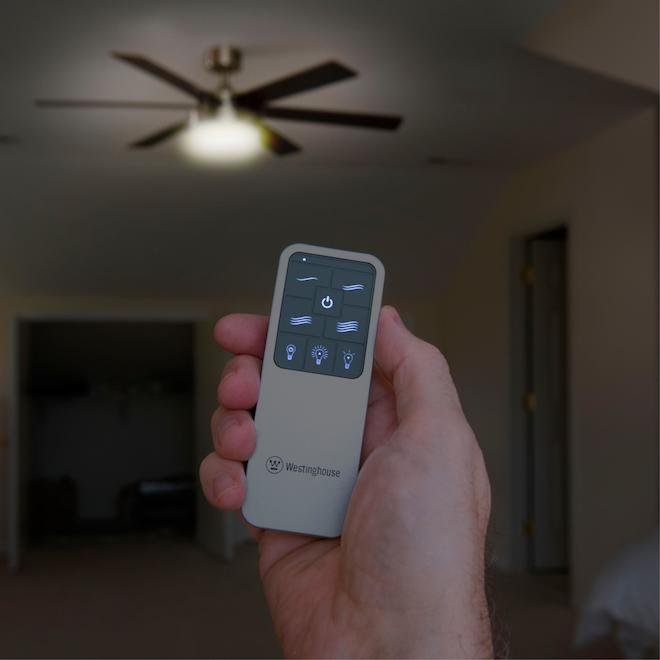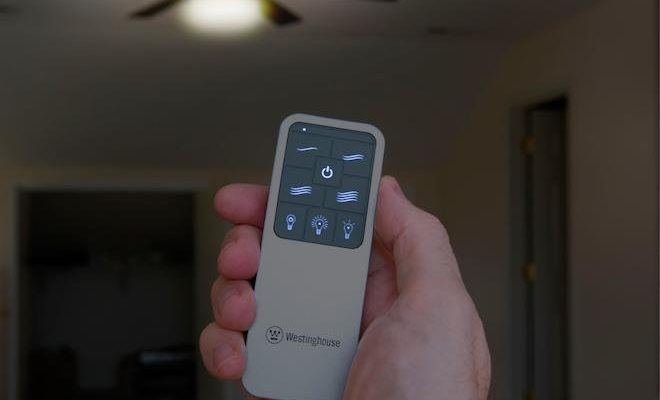
Let me explain: Westinghouse is a trusted brand, and their universal and model-specific remotes come packed with settings that help keep your room cool without burning extra electricity. If you’re new to these remotes, I get it—those extra buttons can seem mysterious. But using the best settings doesn’t take a PhD in electrical engineering. It just takes a willingness to experiment, a little patience, and maybe a fresh set of batteries. Let’s walk through how to pair, sync, and adjust your Westinghouse remote for maximum energy efficiency, one practical step at a time.
Understanding Westinghouse Ceiling Fan Remote Controls
Here’s the thing: not all Westinghouse ceiling fans work the same way, and the remote you’ve got might look simple but can do more than you think. Most include controls for speed, direction, and lights, but some also offer timers or smart features. If you’re staring at a handful of buttons and wondering what half of them do, you’re not alone.
Common Westinghouse remotes come in two flavors: dedicated (matched to specific fan models) and universal (work with many models and sometimes other brands). Both types have similar basic functions, like power, speed selection, and light toggle, but pairing them up—especially a universal remote—means following a unique sync or code process. Don’t worry, it’s usually as simple as flipping a switch on the fan or pushing a special combo on the remote itself.
You might also notice some remotes have dip switches inside the battery compartment. These act like a secret handshake between the remote and the fan, making sure your neighbor’s clicker doesn’t control your unit through the wall. Learning how to pair, reset, and sync your Westinghouse remote is the first step in setting things up for real energy savings.
Setting the Right Fan Speed for Energy Efficiency
Fan speed isn’t just about comfort—it’s about how much energy you actually use. Here’s a story: My cousin used to leave his Westinghouse fan on full blast 24/7, thinking it cooled the room faster. In reality, all he did was burn through extra watts and wear out the motor sooner. Using medium or low speed most of the time is where the magic happens.
The logic goes like this: Lower speeds use less electricity, plain and simple. High speed is for when you walk into a stuffy room and need that quick breeze; otherwise, medium or low does the job efficiently, especially once you’re comfortable. On your Westinghouse remote, you’ll see buttons marked Hi, Med, and Lo (sometimes with icons). Tapping Med or Lo after the room’s cooled down is usually the sweet spot for balancing comfort and energy savings.
If your remote has a timer or sleep mode, even better. Set the fan to run for a couple hours after you hit the sack, then shut off automatically. No more wasted energy spinning away while you’re tucked under the covers.
Correct Use of Directional Settings: Summer vs. Winter
You might be wondering, “Why does my fan run both directions?” It’s not just a party trick. The direction setting on your Westinghouse ceiling fan actually changes how air moves through the room—and this can mean big savings on both cooling and heating bills.
Let me explain how this works:
- Summer (Counterclockwise): The fan pushes air down, creating a chill effect on your skin. This lets you set your AC a bit higher, saving energy.
- Winter (Clockwise): Flip the direction button (often labeled “Rev” or with a circular arrow) to pull air upward. This gently circulates warm air trapped at the ceiling back down, helping your heater work less.
Don’t just set it and forget it—if seasons change, so should your fan’s direction. If your Westinghouse remote doesn’t have a direction button, check for a tiny switch on the motor housing. Sometimes it’s easy to overlook. Getting this right is one of the most overlooked tricks for real, year-round energy efficiency.
Using the Light Function Efficiently
Many Westinghouse ceiling fan remotes include a built-in light control. Here’s where energy savings can sneak up on you, especially if you often leave the light on longer than needed. With the remote, it’s tempting to keep tapping the light button from the bed or sofa, but every extra minute adds up.
If you want to get smart about it:
- Swap out old incandescent bulbs for LEDs—these use a fraction of the power and last so much longer.
- Use the dimming feature, if your remote has one. Brighter isn’t always better, and dimming saves energy.
- Get in the habit of tapping the light button off when you leave the room. Sounds basic, but remote controls make it so easy to forget.
Honestly, good lighting habits plus the right bulbs can cut your lighting costs by more than half. All from a few thoughtful taps on your Westinghouse remote.
Pairing, Syncing, and Resetting Your Westinghouse Remote
Here’s a moment of real talk: If your fan won’t respond, or the settings just don’t seem to stick, you could be dealing with a sync issue. Pairing the Westinghouse remote to your fan is key—not only for convenience, but for making sure the energy-saving features (like timers and proper speed settings) actually work.
Let me walk you through the basics:
- Pairing/Sync: If you’re setting up the remote for the first time, follow the included instructions. Usually, you’ll need to set dip switches inside the battery compartment to match those found on the fan’s receiver. On some remotes, you press a “learn” button while powering on the fan to sync the code.
- Resetting: If your remote stops working, try removing the battery for 30 seconds, then reinstall and repeat the pairing process. Sometimes holding both the power and fan speed buttons down can trigger a reset, but check your model’s manual to be sure.
- Troubleshooting: If nothing works, replace the battery, check the dip switches, and make sure you’re within range. Thick walls, interference, or mis-matched codes can all cause problems.
When in doubt, a quick reset or re-sync can save hours of frustration—and unlock all those valuable energy-saving functions you want.
Maintaining and Troubleshooting Westinghouse Remotes for Peak Performance
You might be surprised how much power a dying remote battery can waste. If you notice your ceiling fan isn’t responding as quickly, or settings get wonky, always check the battery first. Westinghouse remotes are pretty sturdy, but like any tech, they need a little care.
Regularly clean the remote with a dry cloth—sticky buttons or dust buildup can cause missed presses. If you experience persistent issues, try re-syncing as mentioned above, or reset both the fan and remote. If nothing works, you might have a faulty receiver in the fan itself—a rare but fixable problem.
And here’s a quirky thing: Remote signals can interfere with other household electronics, or even another ceiling fan nearby. If your neighbor’s remote keeps turning your lights on and off, matching your dip switch codes is essential. Don’t ignore that step, even if it feels old-fashioned.
Staying proactive with maintenance and troubleshooting keeps your energy-saving settings working smoothly, all year round.
Comparing Westinghouse Remotes With Universal and Smart Alternatives
Not all remote controls are created equal, and sometimes you wonder if you should upgrade. Westinghouse’s own remotes—especially newer ones—are reliable and tailored for their fans. But universal remotes can work too, especially if you’ve lost your original or want to control multiple devices.
A universal remote often requires a different pairing or code process. Some might not offer all the energy-efficient functions, like dedicated fan direction or programmable timers. On the flip side, smart remotes (compatible with Alexa or Google Home) add whole new levels of automation—imagine telling your ceiling fan to shut off from your phone or with your voice.
But here’s the trade-off: Brand-specific remotes almost always provide better reliability and access to fan functions (like direction or dimming). Universal remotes are easier to find, but sometimes skimp on features or sync less reliably. If energy efficiency is your top priority, stick with the official Westinghouse remote or a certified replacement.
Bonus Tips: Small Habits for Big Energy Savings With Your Fan
Even the best remote settings mean little without good habits behind them. For true energy efficiency, combine the right remote settings with thoughtful daily routines.
- Turn off the fan when you leave a room—fans cool people, not air, so there’s no point running them in empty spaces.
- Pair the fan with your thermostat. Set your AC a couple degrees higher and let the circulating air keep you comfortable.
- Use the timer function for naps, bedtime, or when you head out for errands. It’s one of the simplest ways to “set it and forget it.”
- Keep the blades clean. Dust buildup reduces airflow and makes the motor work harder, using more electricity.
With a little attention, the energy savings add up without any sacrifice. It’s like putting your comfort on autopilot, but with a lot less waste.
Closing Thoughts: Getting the Most From Your Westinghouse Ceiling Fan Remote
Optimizing your Westinghouse ceiling fan for energy efficiency isn’t about big, complicated hacks. It’s about understanding what each setting does, taking a few minutes to sync the remote, and picking up some practical habits day to day. Whether you’re pairing the remote for the first time or just fine-tuning your speed and direction settings, you’ve got everything you need right at your fingertips. Honestly, a little care goes a long way—both for your wallet and for staying cool and comfortable all year round.
